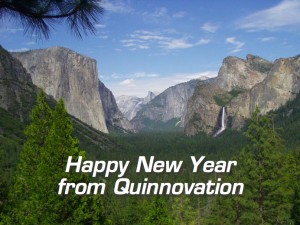 I have much to be grateful for at the start of this new year. I have had quite simply fabulous opportunities to engage, learn, and contribute. For that, I thank you.
I have much to be grateful for at the start of this new year. I have had quite simply fabulous opportunities to engage, learn, and contribute. For that, I thank you.
I am always working to discover new ways to contribute, both alone as Quinnovation in learning experience design strategy, and with my colleagues in the Internet Time Alliance in helping organizations work smarter. I’m fortunate that a second book is due to be published on the 2nd of February, this time on mobile learning, to complement my first book on learning game design.
My latest thoughts are captured here, and I invite you to subscribe via RSS or email if you don’t already. It’s my alternative to a weekly ezine.
Fervent wishes for the coming year, hoping it is your best yet.



 It’s time for me to formally announce that the site for my forthcoming mobile learning book,
It’s time for me to formally announce that the site for my forthcoming mobile learning book,